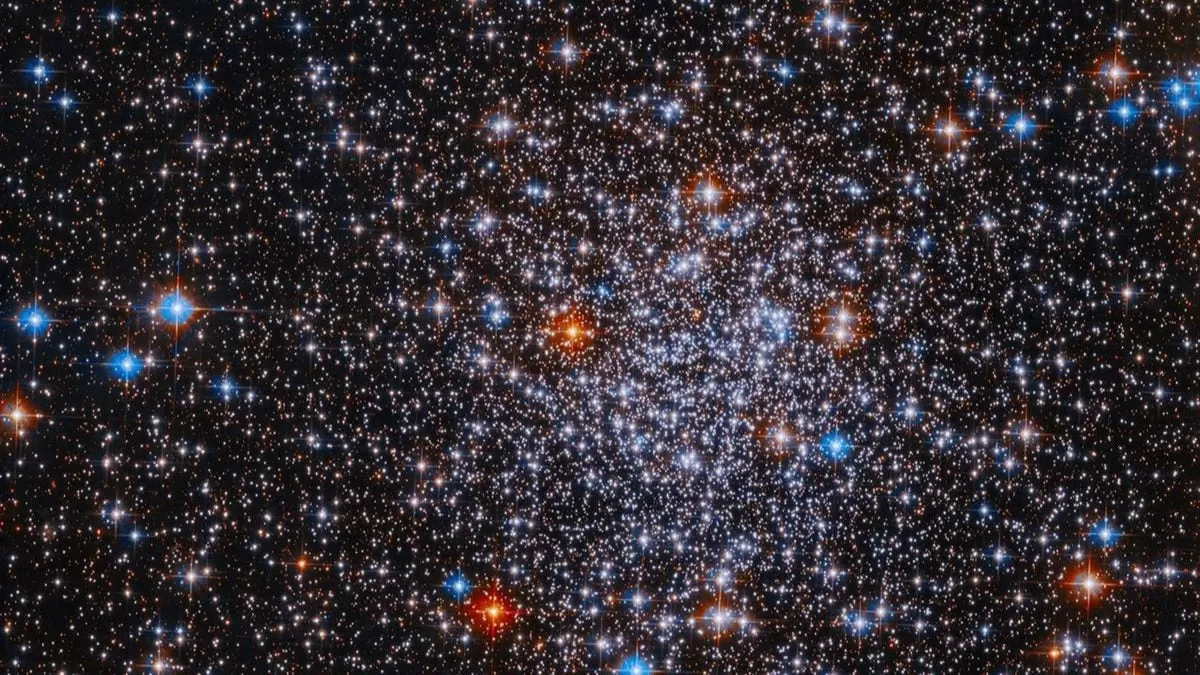NASA’s Hubble Space Telescope has once again amazed the world with its latest discovery – ESO 591-12, a dazzling globular cluster that has long been overlooked by astronomers. In a recent survey of missing clusters, the Hubble telescope captured an image of this ancient star system, providing new insights into stellar evolution and the early Milky Way. This discovery marks a significant step in unraveling the mysteries of our galaxy and its origins.
Located in the southern constellation of Ara, ESO 591-12 is a cluster of stars that has been hidden from our view for centuries. Discovered in the 1970s by the European Southern Observatory (ESO), this cluster has remained largely unexplored due to its location in a dense region of the Milky Way. However, with the powerful lens of the Hubble Space Telescope, scientists were able to capture a stunning image of this hidden gem.
The image captured by the Hubble telescope shows ESO 591-12 in all its glory, with a multitude of multicolored stars glittering against the dark backdrop of space. The stars in this cluster vary in color, indicating differences in their age and composition. This provides valuable information for scientists studying stellar evolution and the formation of galaxies.
Globular clusters are ancient star systems that are thought to have formed in the early stages of the universe, making them some of the oldest objects in our galaxy. They are densely packed with stars, with some containing hundreds of thousands to millions of stars within a relatively small area. By studying these clusters, scientists can gain a better understanding of how stars are formed and how they evolve over time.
The discovery of ESO 591-12 is particularly significant as it sheds light on the structure and origin of globular clusters within our own galaxy. For a long time, astronomers believed that these clusters were formed independently and then captured by the Milky Way. However, recent studies suggest that they may have originated within our galaxy itself. This discovery of ESO 591-12 supports this theory and is a crucial step towards understanding the formation and evolution of our galaxy.
The Hubble telescope has been instrumental in many groundbreaking discoveries in the field of astronomy. Since its launch in 1990, it has provided us with stunning images and invaluable data that has helped us unravel the mysteries of the universe. The latest image of ESO 591-12 is yet another testament to the capabilities of this remarkable telescope.
The discovery of ESO 591-12 is a reminder of the vastness and complexity of our universe. It is a humbling experience to witness the beauty and grandeur of a cluster of stars that has been hidden from our view for so long. This discovery also highlights the importance of continuously exploring and studying the cosmos, as there is still so much to be discovered and understood.
As we continue to delve deeper into the mysteries of our universe, the Hubble Space Telescope will undoubtedly continue to be a crucial tool in our quest for knowledge. With its powerful lens and advanced technology, we can expect many more groundbreaking discoveries in the future.
In conclusion, NASA’s Hubble Space Telescope has once again captured the world’s attention with its latest discovery of ESO 591-12. This long-overlooked globular cluster provides valuable insights into stellar evolution and the early Milky Way, and marks a vital step in our understanding of ancient star systems within our galaxy. This discovery is a testament to the power of human curiosity and the wonders that await us in the vast expanse of space.

